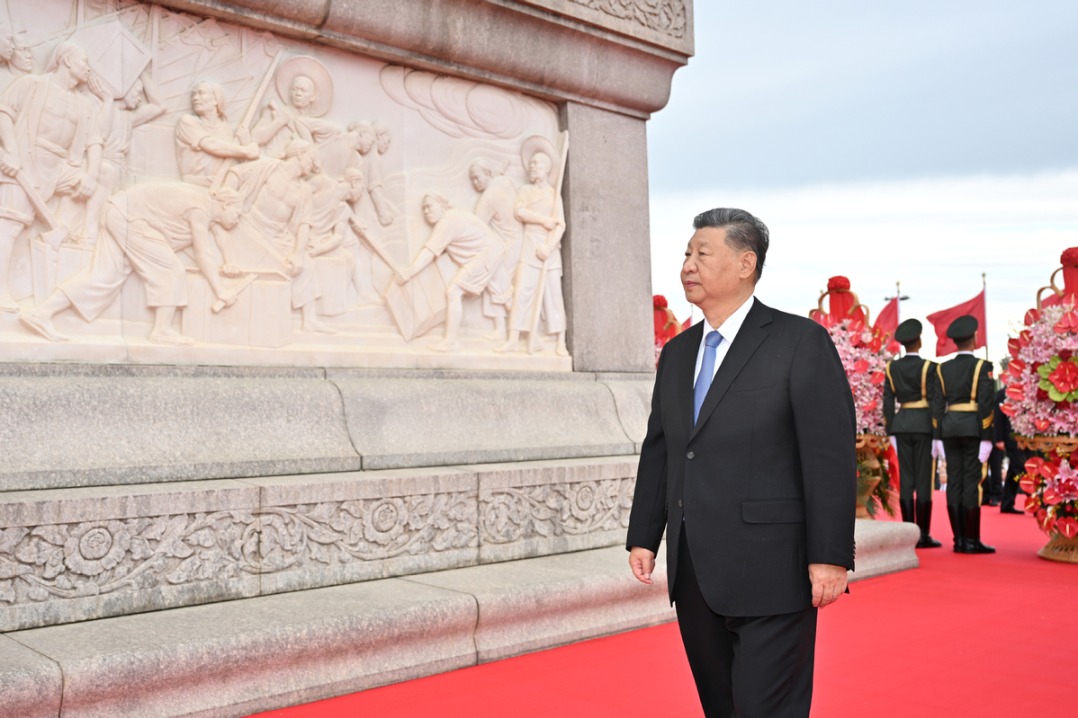'Silver economy' could create golden opportunities
By LU YANG and MENG FANCHENG | China Daily | Updated: 2024-01-06 09:24

China has undergone important demographic changes in recent years. The number of people aged 65 or above has been increasing rapidly, accounting for 14.9 percent of the total population by the end of 2022, with the elderly dependency ratio reaching 21.8 percent. And the country has entered a period of negative population growth.
According to data released by the National Bureau of Statistics in early 2023, the total population of China at the end of 2022 was 1.41 billion, a decline of 850,000 compared with the end of 2021. The United Nations, in its World Population Prospects 2022, too, stated that China entered a period of negative population growth in 2022.
Countries such as Greece, Italy, Portugal and Japan have experienced negative population growth due to endogenous demographic changes, in addition to temporary population decline caused by factors such as natural disasters and wars. The Republic of Korea joined the list of countries with negative population growth in 2021, with its total fertility rate falling below 1.
Aging population and negative population growth because of low fertility rates are natural phenomena in the process of economic development. As an economy develops, more and more women acquire higher education and participate in the workforce, leading to declining fertility rates.
Negative population growth translates into a decline in total demand. But that is usually true for countries with relatively small populations. In China's case, its large population base means the impact of negative population growth on total demand would be limited.
However, the declining working-age population and rapidly rising aging population have led to declining labor supply, and falling savings and investment rates, resulting in a slower potential growth rate.
China's potential growth rate during the 14th Five-Year Plan (2021-25) period is projected to be about 5.5 percent. Although the contribution of the demographic dividend to economic growth has weakened, the contribution of human capital to economic growth is becoming increasingly apparent — it is expected to exceed 10 percent by 2050. This means China can no longer rely on the traditional model of factor inputs driving economic growth to meet its development needs.
Therefore, there is a need to seize the "key variable" of human resources to drive high-quality development. In this context, the central authorities have proposed to implement "a proactive national strategy to address population aging" and offset the negative impact of the declining working-age population by improving labor productivity.
First, improving the quality of the workforce is key to compensating for the labor shortage. This can be done, among other things, by raising education quality and shifting from the traditional examination-oriented education system to cultivating students and promoting innovations.
Second, improving the distribution of educational resources between different regions and between urban and rural areas is essential. For example, there are significant disparities in the distribution of teachers and education infrastructure between urban and rural areas. In such a case, distance teaching mode could be an important way for rural children to get fair educational opportunities.
And third, it is essential to develop vocational education to build a skilled and educated workforce. At present, universities mainly focus on producing general-purpose graduates and postgraduates for the labor market. True, cultivating general-purpose talents contributed to the rapid improvement in human capital in the early stages of China's economic development because there was an overall shortage of talents. But with the Chinese market maturing, general-purpose talents can no longer meet all the new demands of the labor market, leading to an increasing gap between the demand for and supply of skilled workers.
In such a situation, education reform can address the structural contradictions between talent supply and demand, while establishing a sound employment service system to provide job information, career guidance and recruitment services can help workers better integrate into the labor market.
It is also necessary to eliminate employment discrimination and create a fair and equitable employment environment to ensure workers are not discriminated against based on their gender, age or other factors. While there is a need to leverage digital technology to transform and upgrade the labor market, and improve labor productivity, it is imperative to develop resources for the elderly, issue favorable policies so they can re-enter the labor market.
As for population aging, along with challenges, it has also created new opportunities. The 14th Five-Year Plan for the Development of Aging and the Elderly Care Service System emphasizes the importance of developing the "silver economy", integrating the eldercare industry with other industries, and meeting the diverse needs of the elderly. In fact, the development of the silver economy can improve the well-being of the elderly and create a new driver of growth.
Given the rapidly rising aging population, the eldercare industry has enough reasons for expediting development. In fact, the combination of community-based institutional and family-based eldercare systems, along with the increasing use of digital technologies in eldercare services, has facilitated the development of the eldercare industry as a whole, thus creating more jobs.
Also, the integration of medical care and eldercare will help expedite the overall development of the healthcare sector, including disease prevention among the elderly and treatment for chronic diseases.
Besides, the pension insurance system should be developed in a way that allows individuals to choose different insurance and investment plans so they can save enough to lead a dignified retired life. The reformed pension insurance system should alleviate the pressure on the government and society to attend to elderly people's needs. In this regard, financial institutions should be allowed to develop retirement financial products such as payment services, savings plans, wealth management, insurance and mutual funds that cater to the different needs of the elderly people.
Simultaneously, the government should provide policy support for tax incentives, strengthen market supervision and promote the healthy development of the pension insurance industry.
Furthermore, with more leisure time after retirement and increasing income levels, the demand for tourism among senior citizens is rising, while the post-pandemic recovery of the tourism industry has further boosted its growth. Hence, there is a need to improve the facilities of tourist attractions, while making them more user-friendly for the elderly to ensure they enjoy the tourism experience and in turn contribute to the further development of the tourism sector.
Lu Yang is a professor at the Institute of Population and Labor Economics, Chinese Academy of Social Sciences; and Meng Fancheng is a doctoral candidate at the School of Applied Economics, University of Chinese Academy of Social Sciences.
The views don't necessarily reflect those of China Daily.
























